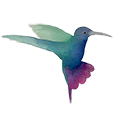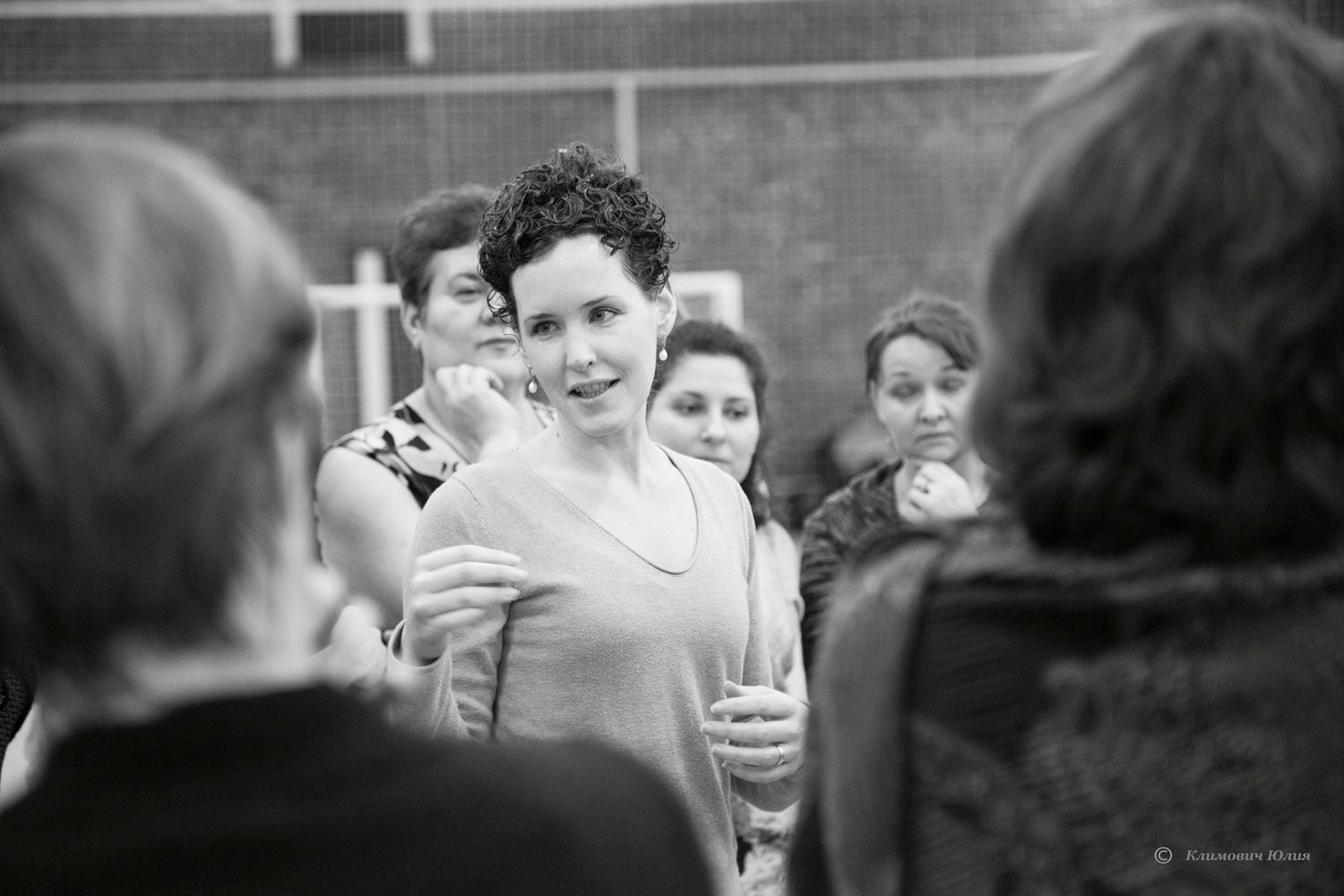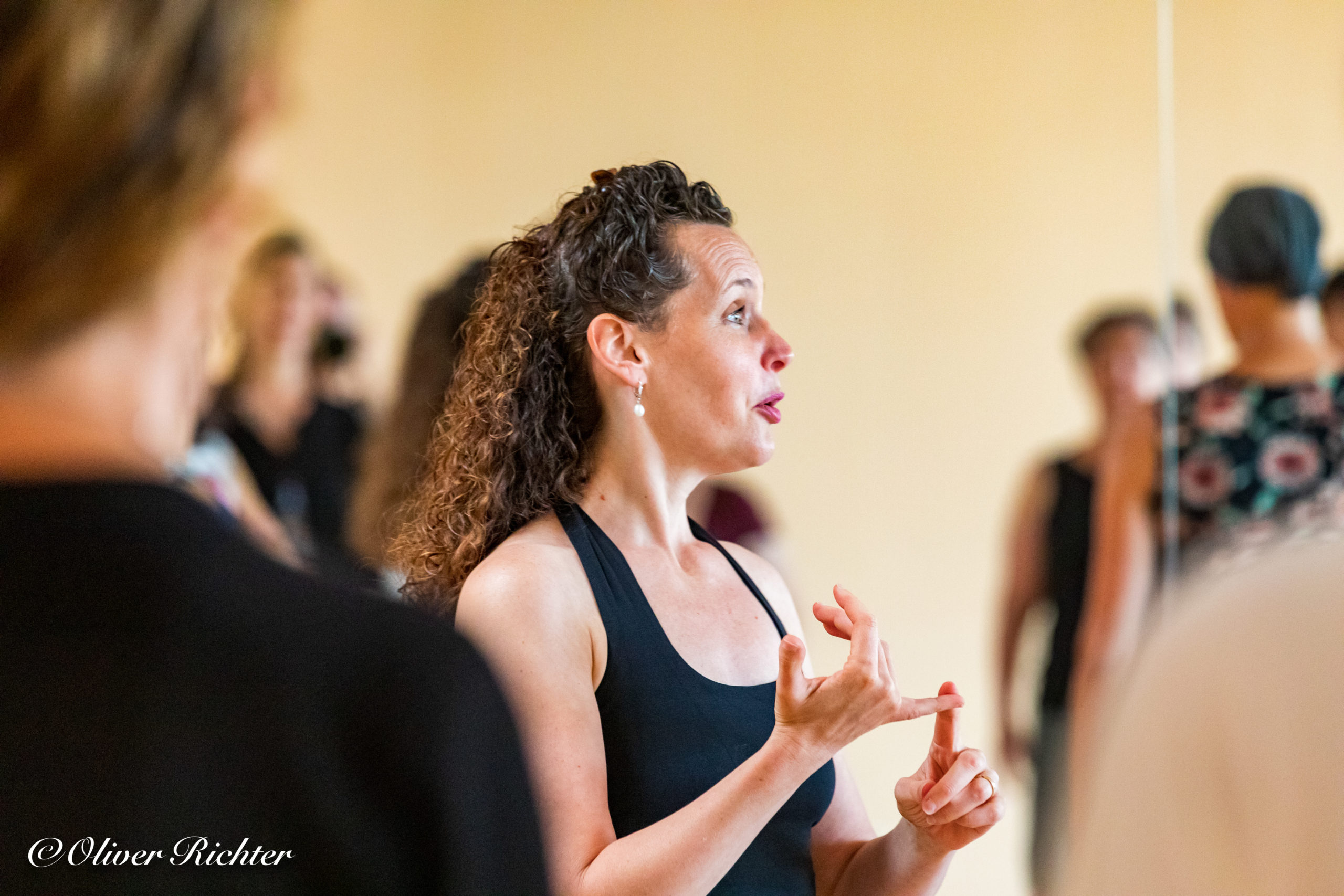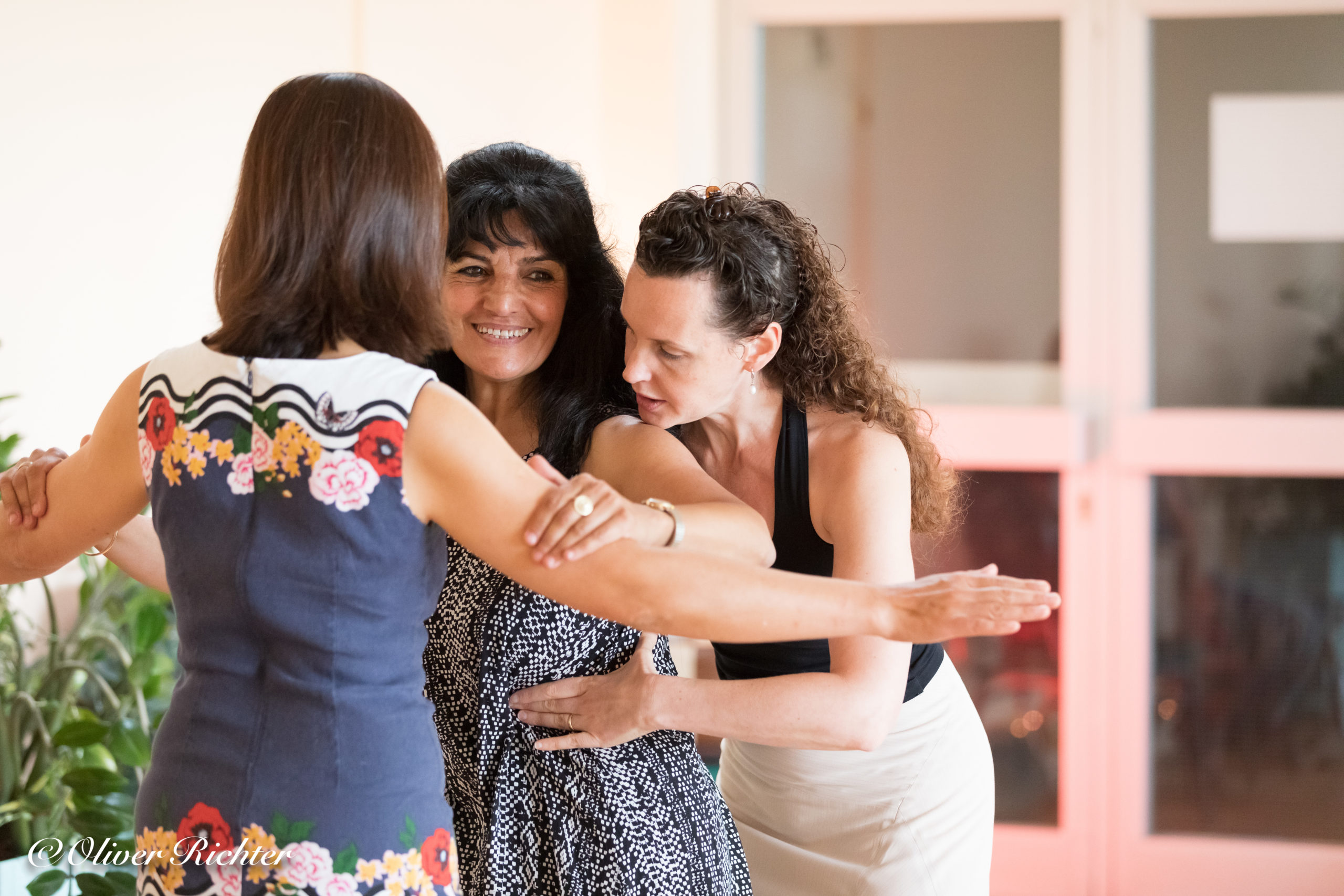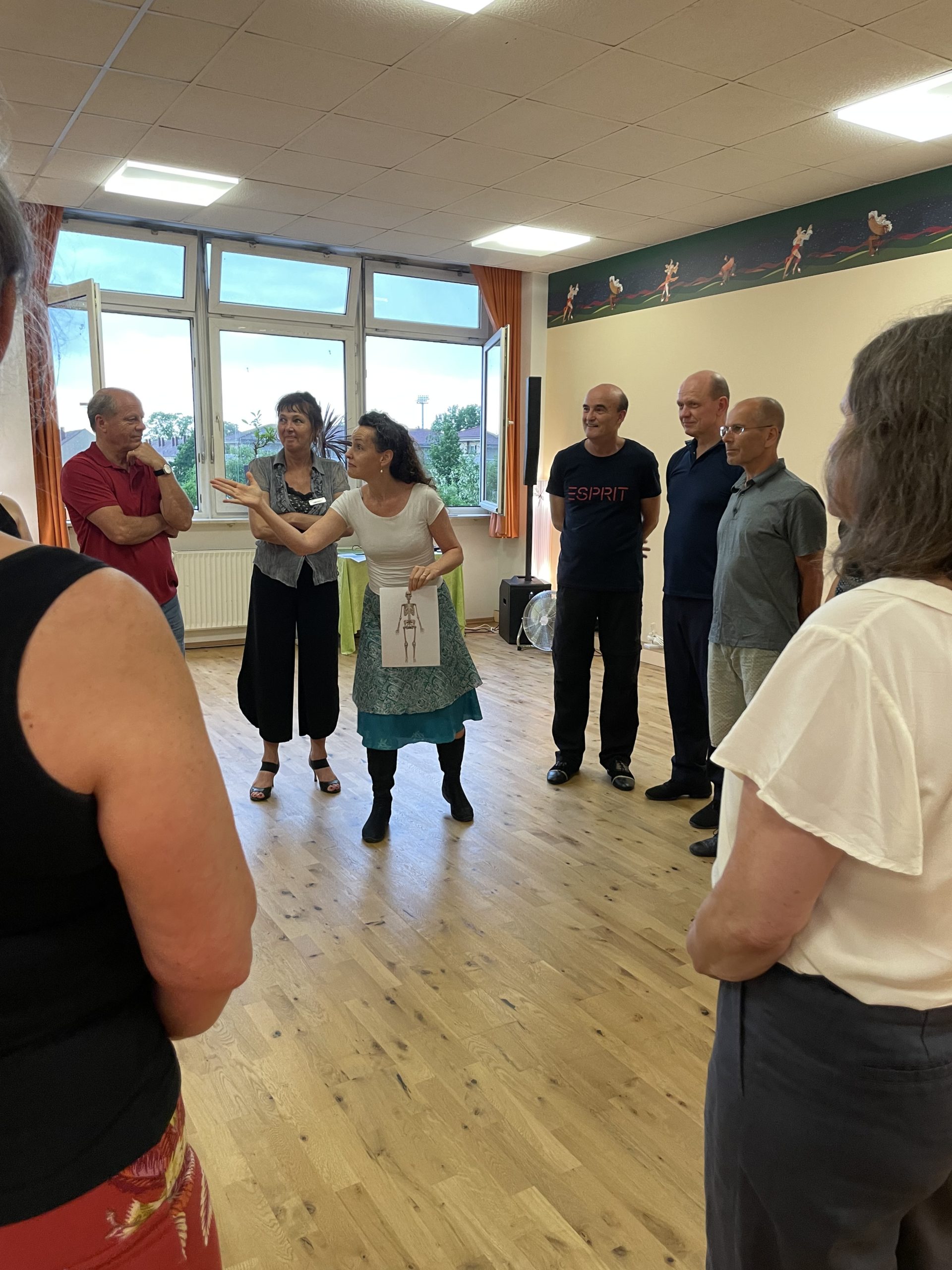In my tango classes, I explore different themes such as body awareness, individual movement technique, learning figures and other technical elements.
I make it a point of honour that my students understand, really understand my explanations regardless of their knowledge of tango, dance in general and their bodies. I use many tools such as mental imagery, explaining aspects of anatomy, schematic draws, and links to personal development or somatic movement. I try to meet everyone’s expectations while respecting the potential of each and everyone. My approach is evolutionary in the sense that I give information step by step allowing dancers to integrate the concepts learned into their bodies without overloading their minds.
There are two main teaching themes that fascinate me:
- Individual technique for both leader and follower
- Musicality.
- Mental images allow students to integrate the proposals taught. Many dancers who have followed my classes will undoubtedly remember the “flip-flop point” or “the wave”.
- Anatomical notions of the human body can be used to understand its functioning and thus ease the functioning of the different areas solicited.
- Although graphic art is not my forte, I regularly make schematic drawings, which helps those who learn more through visual representation than by mental explanation of abstract concepts.
- The more we learn tango, the more we realize how therapeutic this dance can be. As a teacher, I can see how just a thought can be limit or even block a movement or the relationship between oneself and one’s body. If or when I feel the time is right, without judgment, I invite my student to make the connection between body and mind, and past trauma(s) and/or consideration of self. This work could be continued with a professional, if necessary, but just by putting it into words can allow a physical release and therefore improved movement and dance.
- Because many things are not consciousness, I gladly use somatic movement to understand better the body. Graduated from the Dancing Space training in August 2022 thanks to which I discovered Body Mind Centering®, these new notions are now integrated into my classes. The somatic relationship to the body and movement allows everyone to develop their body awareness to rectify imbalances, increase ease, efficiency and joy of movement. To introduce dancers to the somatic, I use anatomical images, biological explanations and, of course, different body exercises, some quite common, others related to cellular memory to allow everyone to reclaim their body by movement and develop awareness. Their tango becomes softer, more fluid, more effective and more sensitive.
I have always been passionate about movement in space: the inner space of one’s own body and the space outside the body where movement and the interaction with others takes place. I favour the teaching of functional movement over aesthetic movement, giving more importance to the movement felt rather to its visual appearance but without completely ignoring it.
My second passion in teaching tango is musicality. I like to help dancers to hear the music differently, to differentiate the melodic lines, to understand the different moods of the music to be able to interprete by adapting their muscle tone accordingly, etc. There are so many things to say about music, so many things to know, without having to be a musician, to better immerse yourself in it and form a harmonious trio: the leader, the follower and the music. Thus, each dance can then be unique.
The study of musicality also makes it possible to review several subjects essential to tango: the role of the leader and the one of the follower, the justification of embellishments, the emotion in the embrace, etc.
I am therefore delighted to meet you during a group or private lesson and to exchange with you on the many subjects of tango.
Til the next abrazo,
When we dance or more broadly when we move, we generally associate movement with 3 systems:
- the skeletal system,
- the muscular system
- and eventually the nervous system
BODY MIND CENTERING® will take into account all the systems of the body to seek a movement beyond habits in order to change its efficiency, its quality and its expression.
Thus, in the lessons, depending on the needs of the topic and/or the student, I can also use:
- the ligament system
- the organ system
- the endocrine system
- the fluid system
- the fascia system
- the fat
- the skin
Far from being esoteric, the BODY MIND CENTERING® wants to be firmly rooted in human anatomy and scientific biology and offers a cellular experience that everyone can explore in their own way.
